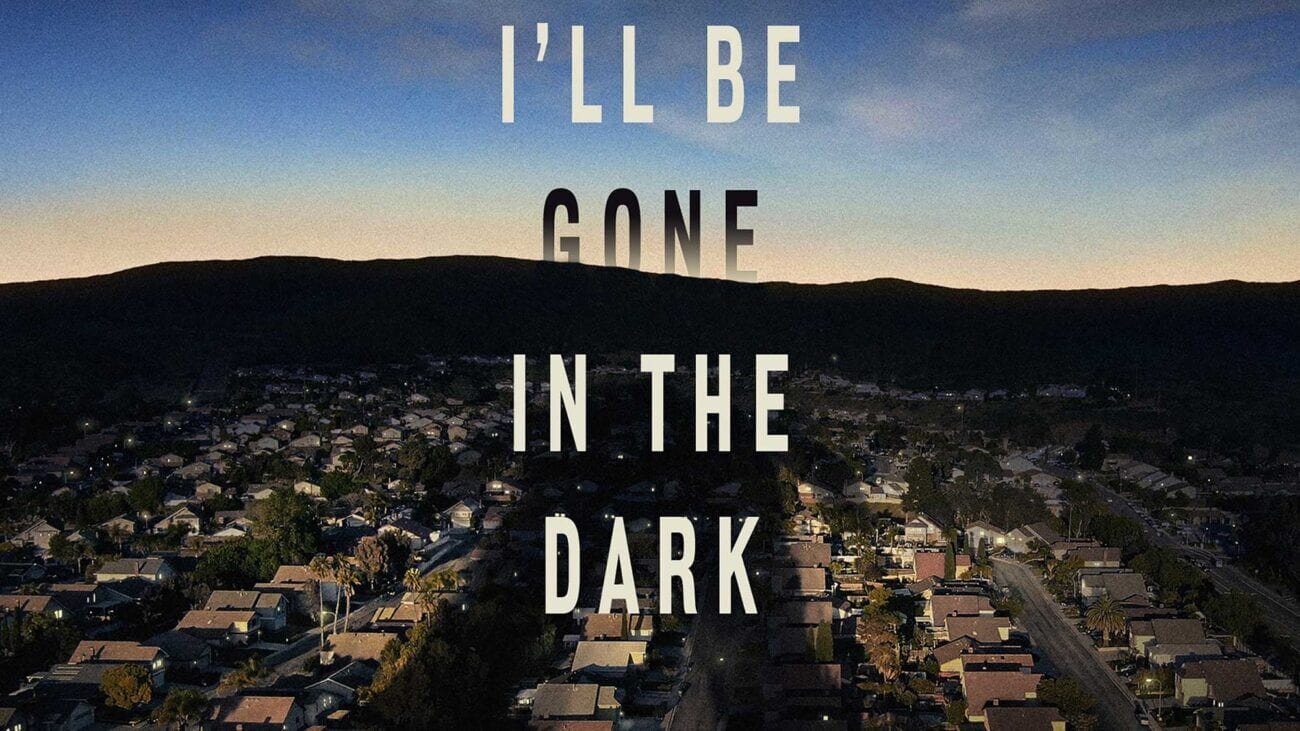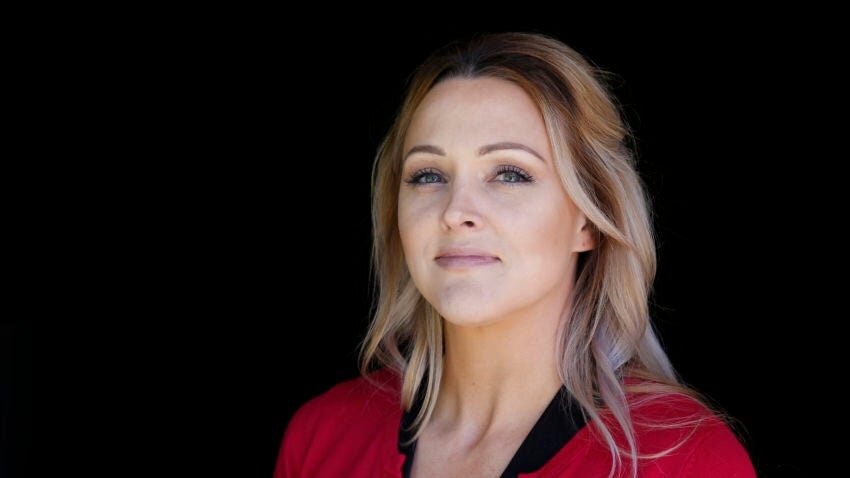HBO’s I’ll Be Gone in the Dark
*Warning - this post references sexual assault, homicide, and suicide*
For my next piece de resistance, I'd like to discuss the new HBO show I'll Be Gone in the Dark. This is a six-part series (new episode released weekly - we're only on week 3) based on Michelle McNamara's book by the same title. It's about finding the most prolific rapist and murderer of modern American history...the Golden State Killer.
I heard about Michelle's book through a crime podcast, but never got around to reading it. Ben actually spotted the series on HBO and we started watching last week. (You can catch the trailer here: https://www.youtube.com/watch?v=DTNHJETw0S8)
The Golden State Killer - also known as the Visalia Ransacker, East Area Rapist, and Original Night Stalker - terrorized California from 1974 to 1986. He began with burglaries in Visalia, progressed to brutal assaults in Sacramento and the Bay Area, and finally escalated to murder down in the Santa Barbara and Ventura counties. GSK is responsible for about 120 burglaries, more than 50 rapes, and at least 13 murders.
A photo released by the Santa Barbara County Sheriff's Office shows Joseph James DeAngelo, who joined the Exeter Police Department in 1973
Yep...read those numbers again. Fifty rapes. Five-zero. At least thirteen murders. And he wasn't caught until 2018 - but the good news is, he WAS caught. On June 29 of this year, 74-yr-old Joseph James DeAngelo pled guilty to multiple counts of murder and kidnapping. Though the California statute of limitations prevented prosecution for his burglaries and rapes, DeAngelo confessed to them all as part of his plea deal. Read: the police said "tell us everything or you're getting the death penalty."
JOSEPH JAMES DeANGELO
Joseph James DeAngelo was born in New York in 1945. He joined the Navy in '64 and served twenty-two months during Vietnam, then moved to California and got his Bachelor's in criminal justice from Sacramento State. He completed a police internship at the Roseville police department, and worked as a police officer in Exeter, California beginning in May 1973. The burglaries started about a year later, in April 1974; he continued them until June 1976, when he moved to Sacramento and escalated from burglary to rape. Around that same time, August 1976, DeAngelo moved to the Auburn police department. He remained there until July 1979, when he was arrested for shoplifting a hammer and dog repellent (!!!) and fired. His work history beyond that is unknown, but his criminal history is not - his firing from the Auburn department represented the beginning of the murders in southern California, which finally ended in 1986. DeAngelo lived quietly with his wife, a lawyer, in Citrus Heights until his arrest in 2018 - through his most heinous crimes, committed hours away.
"I'll Be Gone in the Dark" examines Michelle McNamara's obsessive pursuit of GSK, and the book that she wrote while attempting to do so. Unfortunately she died just two years before police identified DeAngelo, but her work is credited with bringing the case into the national spotlight, which in turn prompted the FBI to re-open the case in 2016.
Five things stuck out to me about the documentary - GSK's M.O., his trophies, the role of citizen-detectives in solving the case, the HUGE role of DNA, and the survivors themselves. Let's dive in:
Primary FBI sketches of GSK in 2016
MODUS OPERANDI
Long before DNA testing began, police suspected that one perpetrator may be behind the burglaries, rapes, and eventual murders across California. While there were several active rapists and murderers at the time (sick, CA) the Golden State Killer was distinct because of his consistent modus operandi, or "method of operation." Initially, GSK stalked middle-class neighborhoods for women at home alone. He would often canvass the house and wait until his target was alone before using an open window or sliding glass door (often prepared in advance) to break in and assault her. Many survivors reported hearing a prowler prior to their attack, and receiving odd phone calls from an unknown source - often with heavy breathing on the other end. Later, GSK shifted from single women to targeting heterosexual couples.
Most survivors reported waking up to GSK shining a flashlight directly into their faces. He always wore a ski mask, and would growl at them to stay still or he'd kill them (the title of Michelle's book is from his statement to one survivor - "I'll be gone in the dark"). He would then bind his victims with ligatures, often making the woman tie up her partner if both were present, and gag/blindfold them with torn towels. He'd separate the couple and stack dishes on the man's back, then threaten to kill both of them if he heard the dishes rattling. As sick as this is, I can understand why it was incredibly effective - neither partner wanted to risk the other's safety by going against GSK's orders.
He would then take the woman into a separate room and rape her, often repeatedly, between casually eating food, drinking beer, and watching tv. According to multiple survivors, the house would eventually go silent - after a length of time, one person would call out to the other, and GSK would come out of the darkness and threaten them again. Police quickly concluded that fear, not sex, was the driving motivation behind the invasions.
GSK's M.O., as well as physical descriptions gathered from his survivors, led to a 2012 psychological profile that seemingly matched the perpetrator perfectly. (If you're really interested you can read it here - but fair warning, it's graphic: https://web.archive.org/web/20121007011328/http://www.aetv.com/cold_case_files/web_exclusives/ep46/nightstalkerprofile.pdf). Once the DNA profiling on DeAngelo was complete, the M.O. and psych profile confirmed beyond the shadow of a doubt that they had found the correct person.
2. TROPHIES
The Golden State Killer was a "trophy guy," meaning he liked to take a little souvenir from the scene of each crime. GSK's trophy-of-choice were rings, often unique or personalized, but he also took ID cards, keys, and snapshots. I'm fascinated by the concept of trophies and the psychology behind them - but also, more than one murderer has been identified by trophies found when police searched their homes! Unfortunately, DeAngelo wasn't one of these; his trophies are still undiscovered.
EW.
Anyway, one of the items stolen was a pair of gold cuff links monogrammed with the initials "N.R." For years Michelle McNamara scoured eBay, Craig's List, and other second-hand online sources looking for those cuff links - and when she finally saw a similar pair, she bought them and texted her husband in the same breath - "I think I found him!"
Unfortunately the cuffs didn't lead directly to GSK, but detectives were THRILLED when Michelle presented them nonetheless. Read on...
3. CITIZEN DETECTIVES
If a random person showed up at a police station with eBay cuff links and zero investigative experience, I can't imagine the average detective would be eager to hear them out. But Michelle wasn't the average rando, and I think 30+ years would make ANY lead interesting. The California police welcomed the help - the detective's exact words about the cuff links were, "I think I love you."
GSK isn't the only recent case solved or assisted by so-called "citizen sleuths." In 2017, a librarian helped identify three bodies from a 1985 cold case in New Hampshire - she picked up a tip from a crime podcast about the likely murderer, and worked with genealogists to identify Marlyse Honeychurch and her daughters Marie and Sarah. And one of the detectives who found the Golden State Killer, Paul Holes, now hosts a podcast designed to include listeners, collect tips, and solve old murders! This is the wave of the future!
4. DNA EVIDENCE
In March 2001, semen evidence from five Southern CA cases matched the DNA profile in semen from Sacramento rapes - so FINALLY, police had confirmation that the East Area Rapist and Original Night Stalker were the same person (leading to the acronym EARONS).
It wasn't until January 2018, however, that detectives took the killer's DNA profile from a Ventura rape kit and uploaded it into a genealogy website. (The website was "open-source," so don't worry - the police can't just roll into 23 and Me and collect your stuff). They found 20ish people who shared the same great-great-great grandparents as GSK - no idea how, but they did! - and used that information to construct a giant family tree. From that, they narrowed their possible killer down to two people. One was ruled out from testing a direct relative's DNA, and the other was Joseph DeAngelo. On April 18, police collected a DNA sample from DeAngelo's car door - as a backup, they fished a tissue out of his garbage can. It was a match, and just six days later, DeAngelo was arrested.
As cool as DNA is, it's not perfect; it can be misused, abused, and as unreliable as any other type of evidence. But it has certainly made a HUGE difference in identifying past criminals and exonerating wrongfully convicted people, which we're here for. Obviously. Hopefully DNA leads to a LOT LESS wrongful convictions in the future.
5. SURVIVORS & VICTIMS
Bottom line: hearing from survivors and victims is awful but so, so important. In my opinion, the HBO show allowed GSK's survivors and people who knew his victims to tell their stories in an incredibly reverent manner. As adults in their fifties and sixties, the survivors recall their sexual assaults as teens and young adults - for a few, it was their first sexual experience. The show points out that there was only one police woman involved with many of the East Area rapes - often, right after their attacks, these women were surrounded by more men. And it was the 70's and 80's, when rape wasn't even a fraction of the crime it's considered today. I marveled at the survivors' strength and courage for re-telling their stories, and handling their trauma in a society that couldn't help - that even blamed them somewhat for their experience.
Unfortunately, I think Joseph DeAngelo had one final victim in this decade - Michelle McNamara herself, author of I'll be Gone in the Dark. She died of an accidental overdose while trying to finish the book. Through text messages and emails, the show depicts her struggle with the dark topic and frustration that the Golden State Killer (a name SHE COINED) had not yet been caught. Tragically, Michelle died on April 21, 2016 - Joseph DeAngelo was arrested on April 24, 2018, almost exactly two years later.
IN CONCLUSION
Okay, there are a few things about the documentary that I don't love - but the story behind it is undeniably fascinating. I feel like it's everyone's secret dream to solve an old murder, right?! But in reality, I can't imagine the impact on the survivors and victims' families when the source of so much pain was finally identified and held accountable. The Golden State Killer isn't America's first serial killer and unfortunately won't be the last - but hopefully, these creeps won't continue to walk free for years and years before being identified. If you have thoughts on this or suggestions for other shows, let me know - I think I'm headed for good old CSI Miami next!





